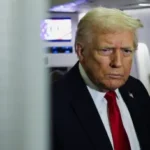
Trump’s tariff populism hurts the American economy and reveals the desperation of an empire that does not accept the changing world
Donald Trump has decided to once again aim his economic weapons against the Global South. In August, the president of the United States imposed tariffs on 50% on Indian productsfurther penalizing the country with additional 25% for buying Russian oil at reduced prices. The gesture, disguised as “defense of American interests”, is in fact another chapter in the old story of North American economic imperialism: when the world tries to follow its own path, Washington responds with sanctions, tariffs and blackmail.
But what appears, at first glance, to be a harsh blow against India, could very well turn into a shooting the United States in the foot. Trump’s trade war — irrational and driven by outdated nationalist rhetoric — threatens not only the global economy, but American hegemony itself, eroding the pillars on which the empire has stood in recent decades.
Partner punishment and imperial blindness
Trump justifies his tariffs as a way to “correct the trade imbalance” and “punish” India for buying Russian oil, ignoring the fact that India itself European Union and China continue to purchase Russian energy without facing similar sanctions. The target is political, not moral: it is about reaffirming US dominance over its “allies”, punishing any movement towards autonomy.
India, however, is not just any economy. With more than 1.46 billion inhabitants and a rapidly expanding middle class, the country has become one of the main drivers of global growth and Washington’s central partner in recent decades. The United States is responsible for approximately 20% of Indian exports and more than 2% of the country’s GDP. By suffocating this relationship, Trump breaks ties that sustained a strategic partnership built by Republican and Democratic governments — a bridge that he now appears willing to burn.
The price of reactionary protectionism
The consequences will be felt not only in New Delhi, but also in Detroit, Houston and New York. The interdependence between the two economies is profound: entire US sectors depend on the Indian production basewhich provides from auto parts and textiles until engineering and information technology services. By taxing these products, Trump increases supply chain costs and, therefore, fuels inflation — precisely the problem that his voters fear most.
Analysts estimate that Indian growth could fall between 0.3 and 0.8 percentage points. Still, those who will suffer most may be American workers themselves, who will see prices rise as multinationals look for more expensive and less efficient alternatives to maintain their operations. Irony of ironies: the same economic populism that Trump sells as “protecting American jobs” tends to erode the purchasing power and stability of the families that support him.
A bet against the dollar itself
More serious, however, is the geopolitical impact. To the alienate IndiaTrump threatens to dismantle one of the pillars of the US strategy for the Indo-Pacific — a region considered essential to contain Chinese influence. The recent rapprochement between the Prime Minister Narendra Modi, Vladimir Putin e Xi Jinping demonstrates that India has alternatives. By pushing it into the arms of China and Russia, Washington loses a crucial ally and reinforces the bloc’s cohesion BRICSwhich is already rehearsing alternative payment systems to the dollar.
A dedollarizationpreviously seen as a distant utopia, gains new momentum in the face of North American arrogance. THE abuse of tariffs and sanctions It could accelerate emerging countries’ search for mechanisms that bypass the US financial system, eroding the main source of American power: its currency. Without the dollar’s exorbitant privilege as a global reserve, the United States loses the ability to finance deficits and impose sanctions with impunity.
India resists, the empire falters
Trump imagines he can isolate India and force it to bend. But the reality is different. The Indian economy has demonstrated resilience and ability to diversifyseeking to expand ties with Asia, Europe and Africa. At the same time, aggressive US policy only reinforces the narrative of a multipolar worldin which emerging powers unite to break dependence on the Global North.
The BRICS countries — Brazil, Russia, India, China and South Africa — advance, with all internal contradictions, a common agenda of economic sovereignty. Trump’s tariff war, therefore, may be remembered as the moment when the United States let a historic partnership slip away and pushed India to the side of those who question Western hegemony.
The illusion of isolationism
Trumpist protectionism is sold as economic patriotism, but what hides behind it is the decline of a model. The American empire, unable to sustain its standard of living based on a productive economy, resorts to walls, tariffs and trade wars. It is the desperation of a power that sees the world changing and tries, in vain, to stop the course of history.
By severing ties with one of the most promising nations on the planet, the United States is not only weakening its economy — weaken their own narrative. The rhetoric of “market freedom” and “democratic partnerships” falls apart when the response to dissent is economic punishment.
Ultimately, India will survive and emerge strongerwhile the United States will have to deal with the consequences of its arrogance. The dollar may remain dominant for some time, but the world has already understood the lesson: trust in the empire has an expiration date.
Trump may have won yet another symbolic battle, but he is losing the war that really matters — that of relevance. And this, unlike tariffs, is not reversed with a decree.
Source: https://www.ocafezinho.com/2025/11/09/a-farsa-do-patriotismo-que-empobrece-o-povo/

